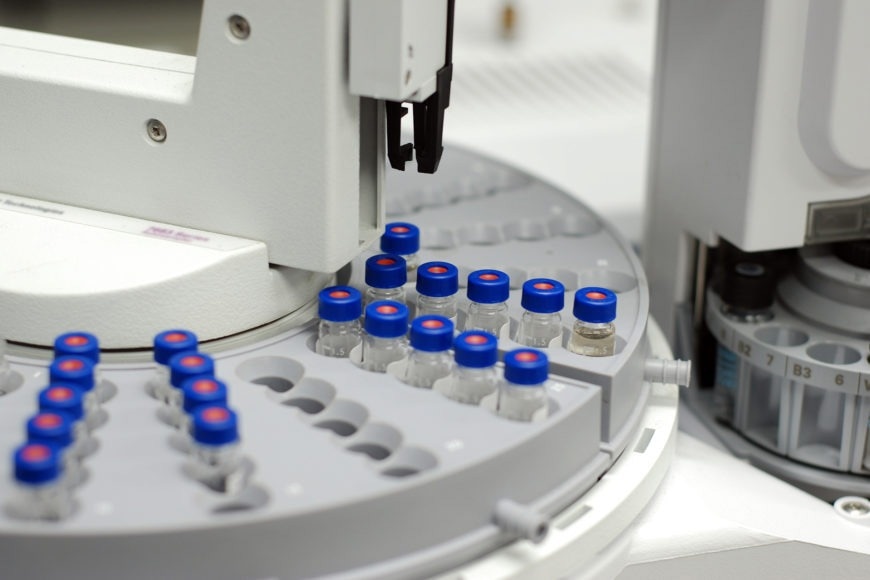Gas mixers are not a new option when it comes to gas chromatography calibration, but they are more cost-effective than gas cylinders and are becoming a more favorable option. Pure gases are generally less expensive than pre-mixed gases, making gas mixers a more economical choice.

Image Credit: Shutterstock
Moreover, using gas mixers can lead to a range of benefits that ultimately reduce costs and increase profitability.
This article explores the reasons why gas mixers are a more cost-effective solution for GC calibration than gas cylinders, as well as the other advantages they offer.
What is GC Calibration?
Gas chromatography (GC) is a highly effective analytical technique that enables the separation and analysis of volatile compounds in mixtures.
This method is widely used to identify chemical compounds and determine their presence or absence in a range of applications, such as quality control, research and development, and safety assessments for both solid, liquid, and gas samples.
To conduct GC analysis, a specialized GC instrument is used; however, over time, this equipment can drift and produce unreliable readings if not calibrated. GC calibration is, therefore, critical to ensuring the accuracy, precision, and repeatability of results.
Why are Gas Mixers More Cost-Effective than Cylinders in GC Calibration?
Various advanced technologies are available to detect, quantify, and analyze different gases in diverse applications. These instruments, ranging from gas detectors and analyzers to environmental monitors, all require calibration to ensure they generate accurate results regarding the presence of gases in a given area.
To accomplish accurate calibration of gas detectors and other gas instruments, gas mixers are an efficient and cost-effective method that provides more benefits than using gas cylinders.
Gas mixers are cost-effective for several reasons. Pure gases are cheaper to purchase than pre-mixed cylinders of gas, and because it is possible to hold more volumes of pure gas, there are fewer rental and delivery costs than cylinders.
Gas cylinders contain pre-mixed gases of a known concentration, but this may not be suitable for every application. Any mistake with the mixture can result in issues such as a new delivery, waiting times, and additional expenses.
Employing a gas mixer allows for a wide range of gas mixtures for limitless applications. They require less space than a gas cylinder and can be utilized flexibly in laboratories.
Therefore, when gas chromatography (GC) is necessary, gas mixers can create the exact mixture required in-house, eliminating lengthy waiting times.
To summarize, the key benefits of using gas mixers include the following:
- Ease of set up for use with any gasses
- Control over mixtures and processes
- Flexibility
- High quality, accuracy, and repeatability
- Lower costs
- Profitability
Mixers are highly cost-effective and dependable instruments that can be utilized to create precise gas mixtures tailored to meet specific calibration requirements.
These mixers are available in various configurations, providing options for diverse industries and applications. In addition, manufacturers such as Environics can design and build customized machines.
Gas Chromatography with Environics
Environics has been a trusted supplier of gas mixers to laboratories worldwide for over two decades, supporting their gas chromatography applications. Environics gas mixers are highly precise and generate exact gas calibration standards, making them ideal for research purposes that require specific gas mixtures.
Series 4000 Multi-Component Gas Mixing System
Environics’ Series 4000 is an affordable gas mixing system that is utilized to create gas calibration standards, gaseous atmospheres, or gas mixtures for research.
This system is designed to be linked to a computer via USB or Bluetooth, and the user-friendly application enables remote control, canister filling, and optional alarms.
With the capability to mix up to seven gases simultaneously, this system can accommodate additional gas circuits and offers a selection of operating modes depending on your application requirements.

This information has been sourced, reviewed and adapted from materials provided by Environics, Inc.
For more information on this source, please visit Environics, Inc.